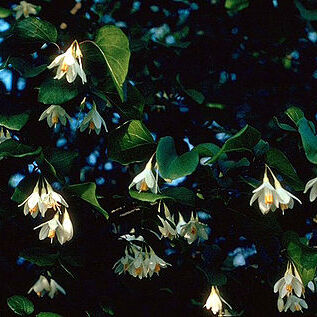Trees or shrubs, stellate pubescent or scaly, rarely glabrous. Leaves usually alternate. Inflorescences axillary or terminal, racemes, panicles, or cymes, sometimes 1-flowered or several-flowered in a fascicle; bracteoles small, early deciduous. Flowers bisexual. Calyx cup-shaped, 5-toothed, rarely 2--6-lobed or truncate. Corolla campanulate; lobes 5(--7), imbricate or valvate. Stamens (8--)10(--13), equal or rarely unequal in length; filaments flattened, free, sometimes basally adnate to corolla; anthers oblong. Ovary superior, 3-locular when young, becoming 1-locular; ovules 1--4 per locule, placentation parietal. Style subulate or filiform; stigma capitate or 3-lobed. Drupe, indehiscent or 3-valvate dehiscent, exocarp fleshy to dry. Seeds 1(or 2); seed coat almost bony, with a large basal hilum; endosperm fleshy or almost bony; embryo straight.
Shrubs or trees, at least the innovations stellate-hairy, tomentose or lepidote. Leaves mostly tomentose below; petiole sulcate. Calyx campanulate to cup-shaped, free, or the base connate with the ovary, truncate, rarely toothed. Flowers solitary, mostly in racemes or leafy panicles. Corolla lobes 5(-6-7), connate at the base with the annular staminal tube. Stamens (8-9-)10(-11-14), erect, connate at the base; anthers split lengthwise. Ovary imperfectly 3-locular, with few ovules per cell, or only 1. Style 3-angular; stigma punctiform or indistinctly 3-lobed. Fruit globular to oblong, dehiscent or not. Seeds 1(-2) attached at its base.
Fls 5-merous; cal obconic, its lower half adherent to the ovary; cor-lobes equaling or (ours) longer than the tube, eventually spreading or recurved; stamens 10, inserted at the base of the cor, monadelphous at base; ovary 3-locular below, unilocular above; ovules few in each locule; fr dry, crustaceous, usually 1-seeded, often irregularly dehiscent, its lower third adherent to the persistent cal. 120, widespread.

